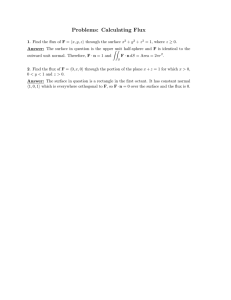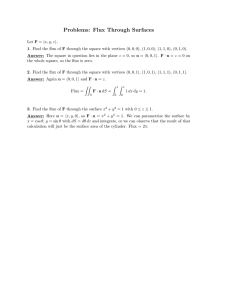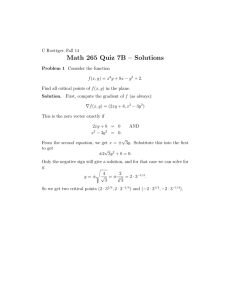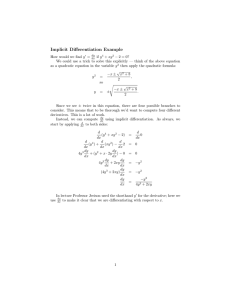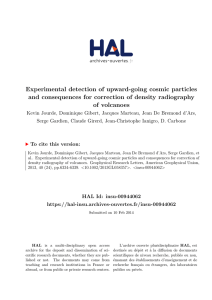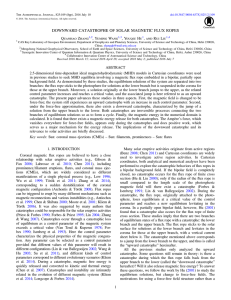Document 13740097
advertisement
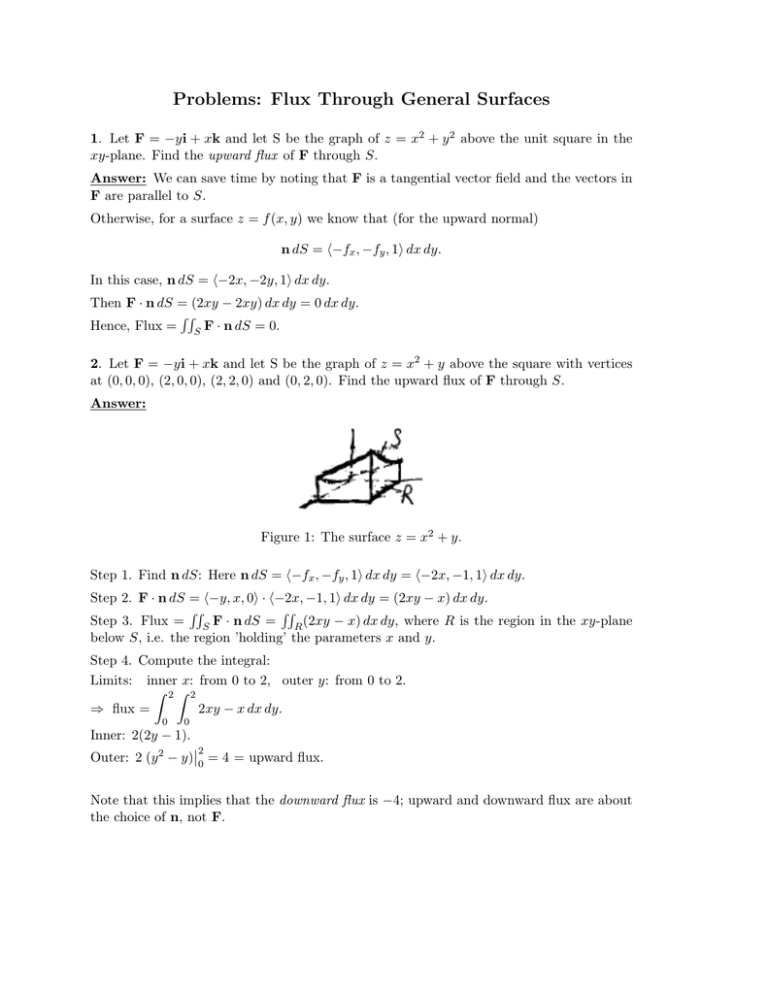
Problems: Flux Through General Surfaces 1. Let F = −yi + xk and let S be the graph of z = x2 + y 2 above the unit square in the xy-plane. Find the upward flux of F through S. Answer: We can save time by noting that F is a tangential vector field and the vectors in F are parallel to S. Otherwise, for a surface z = f (x, y) we know that (for the upward normal) n dS = (−fx , −fy , 1) dx dy. In this case, n dS = (−2x, −2y, 1) dx dy. Then F · n dS = (2xy − 2xy) dx dy = 0 dx dy. Hence, Flux = S F · n dS = 0. 2. Let F = −yi + xk and let S be the graph of z = x2 + y above the square with vertices at (0, 0, 0), (2, 0, 0), (2, 2, 0) and (0, 2, 0). Find the upward flux of F through S. Answer: Figure 1: The surface z = x2 + y. Step 1. Find n dS: Here n dS = (−fx , −fy , 1) dx dy = (−2x, −1, 1) dx dy. Step 2. F · n dS = (−y, x, 0) · (−2x, −1, 1) dx dy = (2xy − x) dx dy. Step 3. Flux = S F · n dS = R (2xy − x) dx dy, where R is the region in the xy-plane below S, i.e. the region ’holding’ the parameters x and y. Step 4. Compute the integral: Limits: inner x: from 0 to 2, outer y: from 0 to 2. 2 2 ⇒ flux = 2xy − x dx dy. 0 0 Inner: 2(2y − 1). Outer: 2 (y 2 − y) 2 0 = 4 = upward flux. Note that this implies that the downward flux is −4; upward and downward flux are about the choice of n, not F. MIT OpenCourseWare http://ocw.mit.edu 18.02SC Multivariable Calculus Fall 2010 For information about citing these materials or our Terms of Use, visit: http://ocw.mit.edu/terms.
